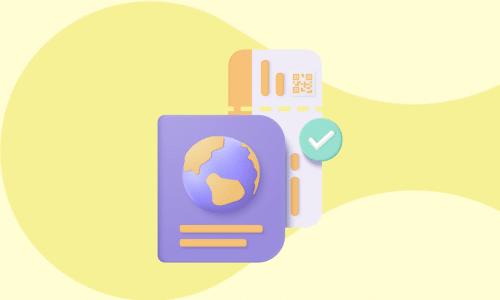Understanding Terminal ID Numbers to Help Avoid Chargebacks

As a business owner, dealing with chargebacks can be a frustrating and costly experience. Chargebacks occur when a customer disputes a transaction with their bank or card issuer, and the merchant is forced to refund the purchase amount. Chargebacks can happen for a variety of reasons, but they are often the result of fraud, customer disputes, or errors in the payment process.
Protect Your Business from Chargebacks with Terminal ID Numbers
If you're looking for a way to avoid chargebacks and protect your business, terminal ID numbers may be just what you need. Terminal ID numbers are unique identification codes that are assigned to individual point-of-sale terminals. They are used to track transactions and ensure that the payment information is processed correctly.
Understanding the Importance of Terminal ID Numbers
Terminal ID numbers are crucial for preventing chargebacks because they help merchants identify the source of the transaction. When a customer disputes a charge, the merchant can use the terminal ID number to locate the specific transaction and determine its legitimacy. This helps merchants avoid unnecessary chargebacks and disputes, saving them time and money.
Terminal ID numbers are also important for record-keeping purposes. By using terminal ID numbers to track transactions, merchants can easily access detailed information about each sale, including the date and time of the transaction, the amount charged, and the payment method used. This information can be used to identify trends and patterns in sales, which can help merchants make informed business decisions.
In addition to helping merchants avoid chargebacks and disputes, terminal ID numbers can also be used to prevent fraud. By tracking transactions using terminal ID numbers, merchants can quickly identify suspicious activity and take action to prevent fraudulent transactions from occurring.
How to Implement Terminal ID Numbers in Your Business
Implementing terminal ID numbers in your business is a simple process. Most point-of-sale systems automatically generate terminal ID numbers for each transaction, so all you need to do is make sure that you are using a system that supports this feature.
Once you have terminal ID numbers enabled, it's important to make sure that your employees understand how to use them. Train your staff on the importance of terminal ID numbers and how to locate them in your point-of-sale system. This will ensure that everyone in your business is equipped to prevent chargebacks and disputes.
Finally, it's important to regularly review your transaction records to identify any potential issues or discrepancies. By staying vigilant and proactive, you can protect your business from chargebacks and other payment-related problems.
Terminal ID Numbers vs. Merchant ID Numbers: What You Need to Know
It's important to note that terminal ID numbers are not the same as merchant ID numbers. Merchant ID numbers are used to identify the merchant account and are assigned by the payment processor. Terminal ID numbers, on the other hand, are specific to individual point-of-sale terminals and are assigned by the merchant.
The Role of Terminal ID Numbers in Payment Processing
Terminal ID numbers play a critical role in the payment processing cycle. When a customer makes a purchase, their card information is transmitted to the merchant's point-of-sale terminal. The terminal processes the payment and sends the transaction data to the payment processor. The payment processor uses the terminal ID number to track the transaction and ensures that the payment is authorized and processed correctly.
How to Easily Locate Your Terminal ID Number
If you're unsure where to find your terminal ID number, don't worry. Your terminal ID number is typically located on the receipt or in the terminal settings menu. If you're still having trouble locating it, contact your payment processor for assistance.
Ensuring the Security of Your Terminal ID Number
It's important to keep your terminal ID number secure to protect your business and customers. Be sure to store your terminal in a safe location and restrict access to authorized personnel only. Additionally, regularly check for any signs of tampering or damage to your terminal to ensure that it hasn't been compromised.
The Connection Between Terminal IDs and Chargebacks
Terminal ID numbers can play a critical role in preventing chargebacks. When a customer disputes a charge, the merchant can use the terminal ID number to identify the specific transaction and determine its legitimacy. This helps prevent unwarranted chargebacks and disputes, saving merchants time and money.
How Terminal ID Numbers Can Help You Win Chargeback Disputes
If a customer does dispute a charge and files a chargeback, the merchant can use the terminal ID number as evidence to support their case. The terminal ID number provides a timestamp and proof of the transaction, which can help merchants win disputes and avoid unnecessary chargebacks.
Frequently Asked Questions About Terminal ID Numbers
What is a Terminal ID Number and Why is it Important?
A terminal ID number is a unique identification code assigned to individual point-of-sale terminals. It's important because it helps merchants identify the source of a transaction and prevent unnecessary chargebacks.
How Can Terminal ID Numbers Help Prevent Chargebacks?
Terminal ID numbers help prevent chargebacks by providing evidence of the transaction and preventing unwarranted disputes.
Is a Terminal ID Number the Same as a Merchant ID?
No, a terminal ID number is specific to individual point-of-sale terminals, while a merchant ID number is used to identify the merchant account.
Where Can You Find Your Terminal ID Number and How is it Used?
Your terminal ID number is typically located on the receipt or in the terminal settings menu. It's used to track transactions and ensure that payment information is processed correctly.
New Study on PSD2 and Its Impact on Payment Processing
As payment processing technology continues to evolve, it's important for businesses to stay informed about industry updates and changes. A recent study on the PSD2 directive has implications for payment processing and merchant businesses, and staying up-to-date on the latest trends and regulations can help businesses stay ahead of the curve.
Building a Secure Payment System: Best Practices and Tips
Protecting your payment system is critical for preventing fraud and ensuring customer trust. There are several best practices and tips that merchants can follow to build a secure payment system, including implementing encryption, monitoring your system for suspicious activity, and conducting regular audits and risk assessments.
In conclusion, understanding terminal ID numbers and their role in payment processing can help merchants avoid unwarranted chargebacks and disputes, saving them time and money. By implementing best practices and keeping up-to-date with industry trends and changes, businesses can build a secure payment system that protects their customers and their bottom line.






